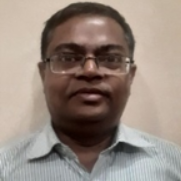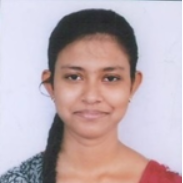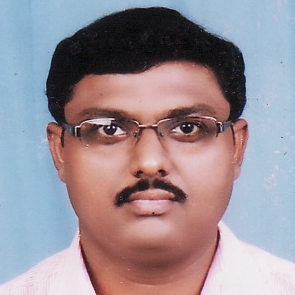International Journal of Image, Graphics and Signal Processing (IJIGSP)
IJIGSP Vol. 17, No. 1, 8 Feb. 2025
Cover page and Table of Contents: PDF (size: 1015KB)
An Autoencoder-Based Deep Learning Model for Fractographic Characterization of Tungsten Heavy Alloys
PDF (1015KB), PP.45-58
Views: 0 Downloads: 0
Author(s)
Index Terms
Autoencoder, Fractography, Machine Learning, Computer Vision Technique, Tungsten -Heavy Alloys (WHA)
Abstract
Fracture surface analysis is crucial in investigating manufacturing failures and material characterization. Traditional manual inspection methods are slow and subjective, prompting the need for efficient automated tools using advanced computer vision techniques. Recent machine learning models for classifying surface fractures show potentials but struggle due to the lack of large, labeled datasets. This study explores the potential application of autoencoders, a self-supervised neural network, to identify unintended fracture surfaces from anomalous manufacturing of tungsten-heavy alloys. The proposed autoencoder-based model achieves 97% accuracy in distinguishing undesirable fracture patterns by analyzing the reconstruction loss of the images, surpassing existing methods. This high accuracy highlights the autoencoder's ability to automatically extract and reduce dimensional features from fracture surfaces effectively. The experimental result obtained on tungsten-heavy alloys demonstrate the model's potential towards developing autoencoder-based automated tools for fractographic analyses across various materials and operational scenarios.
Cite This Paper
Sudipta Pal, Triparna Sarkar, Sourav Saha, Priya Ranjan Sinha Mahapatra, "An Autoencoder-Based Deep Learning Model for Fractographic Characterization of Tungsten Heavy Alloys", International Journal of Image, Graphics and Signal Processing(IJIGSP), Vol.17, No.1, pp. 45-58, 2025. DOI:10.5815/ijigsp.2025.01.04
Reference
[1]N. Senthilnathan, A. Raja Annamalaia, G. Venkatachalama, "Microstructure and mechanical properties of spark plasma sintered Tungsten Heavy Alloys", Materials Science & Engineering A, vol. 710, pp. 66-73, 2018.
[2]Y. Sahin, "Recent Progress in Processing of Tungsten Heavy Alloys", Journal of Powder Technology, 2014, “doi: 10.1155/2014/764306”.
[3]Zhi-Bo Li, He Zhang, Guo-Hua Zhang, And Kuo-Chih Chou, "Fabrication and Characterization of Tungsten Heavy Alloys with High W Content by Powder Metallurgy", Materials Science & Engineering A, vol. 53, pp. 1085- 1098, 2022, “doi: 10.1007/s11661-021-06579-w”.
[4]M.X. Bastidas-Rodriguez, F.A. Prieto-Ortiz and Edgar Espejo, “Fractographic classification in metallic materials by using computer vision”, Engineering Failure Analysis, vol. 59, pp. 237-252, 2016, “doi: 10.1016/j.engfailanal.2015.10.008”.
[5]Ashish Sinha & K.S Suresh, "Deep Learning based Dimple Segmentation for Quantitative Fractography",
[6]Electrical Engineering and Systems Science, vol. 3, 2018, “doi: 10.48550/arXiv.2007.02267”.
[7]Konovalenko, I., Maruschak, P., Prentkovskis, O. and Juneviˇcius, R., "Investigation of the Rupture Surface of the Titanium Alloy Using Convolutional Neural Networks", Materials, vol. 11(2), p 2467, 2018, “doi: 10.3390/ma11122467”.
[8]Dutta, Samik, Arpan Das, Kaustav Barat, and Himadri Roy. "Automatic characterization of fracture surfaces of AISI 304LN stainless steel using image texture analysis", Measurement, vol. 45, no. 5, pp.1140-1150, 2012, “doi: 10.1016/j.measurement.2012.01.026”.
[9]Dayakar L. Naik and Ravi Kiran, “Identification and Characterization of Fracture in Metals using Machine Learning based Texture Recognition Algorithms”, Engineering Fracture Mechanics, vol. 219, p 106618, 2019, “doi: 10.1016/j.engfracmech.2019.106618”.
[10]Mar´ıa X. Bastidas-Rodrigueza, Luisa F. Polania, Adrien Gruson, and Flavio Prieto-Ortiz, "Deep Learning for Fractographic Classification in Metallic Materials", Engineering Failure Analysis, vol. 113, pp. 104532, 2020, “doi: 10.1016/j.engfailanal.2020.104532”.
[11]Stylianos Tsopanidis, Ral Herrero Moreno & Shmuel Osovski, "Toward quantitative fractography using convolutional neural networks", Engineering Fracture Mechanics, vol. 231, p 106992, 2020, “doi: 10.1016/j.engfracmech.2020.106992”.
[12]Akihiro Endo, Yoshiyuki Furuya, Kenji Nagata, Hideki Yoshikawa and Hayaru Shouno, "Fracture mode classification by texture analysis of fracture surface scanning electron microscope images", Science and Technology of Advanced Materials: Methods, vol. 2(1), pp. 129-138, 2022, “doi: 10.1080/27660400.2022.2065185”.
[13]Han Yan, Chongquan Zhong, Wei Lu & Yuhu Wu, "Metal fracture recognition: a method for multi- perception region of interest feature fusion", Applied Intelligence, pp. 1-25, 2023, “doi: 10.1007/s10489-023-04795-y”.
[14]Stylianos Tsopanidis and Shmuel Osovski, "Unsupervised Machine Learning in Fractography: Evaluation and Interpretation", Materials Characterization, vol. 182, p 111551, 2021, “doi: 10.18126/aph0-olbz”.
[15]Hull, Derek. Fractography: observing, measuring and interpreting fracture surface topography. Cambridge University Press, 1999.
[16]ASM Handbook, Fractography, vol. 12, “doi: 10.31399/asm.hb.v12.9781627081818”.
[17]J.N. Kapur, P.K. Sahoo and A.K.C. Wong, “A new method for gray-level picture thresholding using the entropy of the histogram”, Computer Vision, Graphics, And Image Processing, vol. 29, pp. 273-285, 1985, “doi: 10.1016/0734-189X(85)90125-2”.
[18]Roy, Moumita, Sukanta Majumder, Anindya Halder, and Utpal Biswas. "ECG-NET: A deep LSTM autoencoder for detecting anomalous ECG", Engineering Applications of Artificial Intelligence, vol. 124, p 106484, 2023, “doi: 10.1016/j.engappai.2023.106484”.
[19]Mujeeb, Abdul, Wenting Dai, Marius Erdt, and Alexei Sourin. "Unsupervised surface defect detection using deep autoencoders and data augmentation." In 2018 International conference on cyberworlds (CW), pp. 391-398. IEEE, 2018, “doi: 10.1109/Cw.2018.00076”.
[20]Di, He, Xu Ke, Zhou Peng, and Zhou Dongdong. "Surface defect classification of steels with a new semi- supervised learning method." Optics and Lasers in Engineering, vol. 117, pp. 40-48, 2019, “doi: 10.1016/j.optlaseng.2019.01.011”.
[21]S. Bunrit, N. Kerdprasop, and K. Kerdprasop. ”Improving the Representation of CNN Based Features by Autoencoder for a Task of Construction Material Image Classification”, Journal of Advances in Information Technology, vol. 11(4), 2020, “doi: 10.12720/jait.11.4.192-199”.
[22]Chow, Jun Kang, Zhaoyu Su, Jimmy Wu, Pin Siang Tan, Xin Mao, and Yu-Hsing Wang. "Anomaly detection of defects on concrete structures with the convolutional autoencoder", Advanced Engineering Informatics, vol. 45, p 101105, 2020, “doi: 10.1016/j.aei.2020.101105”
[23]Tsai, Du-Ming, and Po-Hao Jen. "Autoencoder-based anomaly detection for surface defect inspection", Advanced Engineering Informatics, vol. 48, p 101272, 2021, “doi: 10.1016/j.aei.2021.101272”.
[24]Liu, Jie, Kechen Song, Mingzheng Feng, Yunhui Yan, Zhibiao Tu, and Liu Zhu. "Semi-supervised anomaly detection with dual prototypes autoencoder for industrial surface inspection", Optics and Lasers in Engineering, vol. 136, p 106324, 2021, “doi: 10.1016/j.optlaseng.2020.106324”.
[25]Sun, Zhongju, Jian Wang, and Yakun Li. "RAMFAE: a novel unsupervised visual anomaly detection method based on autoencoder", International Journal of Machine Learning and Cybernetics, vol. 15, pp. 355–369, 2024, “doi: 10.1007/s13042-023-01913-7”.
[26]Jafari, Abouzar, Lingyue Ma, Amir Ali Shahmansouri, and Roberto Dugnani. "Quantitative fractography for brittle fracture via multilayer perceptron neural network", Engineering Fracture Mechanics. vol. 291, p 109545, 2023, “doi: 10.1016/j.engfracmech.2023.109545”.
[27]Li, Diyuan, Zida Liu, Quanqi Zhu, Chenxi Zhang, Peng Xiao, and Jinyin Ma. "Quantitative Identification of Mesoscopic Failure Mechanism in Granite by Deep Learning Method Based on SEM Images", Rock Mechanics and Rock Engineering, vol. 56, no. 7, pp. 1-22, 2023, “doi: 10.1007/s00603-023-03307-1”.
[28]P. Roy, S. Dutta, N. Dey, G. Dey, S. Chakraborty and R. Ray, "Adaptive thresholding: A comparative study," 2014 International Conference on Control, Instrumentation, Communication and Computational Technologies (ICCICCT), Kanyakumari, India, 2014, pp. 1182-1186.



